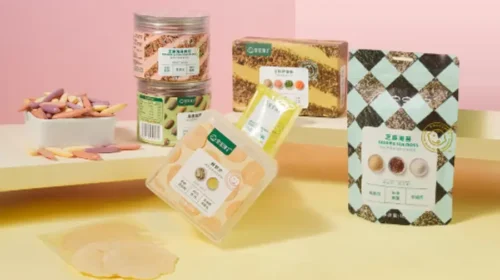RLX Sees Chilly Times Ahead as China’s Vaping Sector Transitions

The country’s leading maker of electronic cigarettes and cartridges is having to reinvent its entire product line ahead of new regulations that take effect Oct. 1
Key Takeaways:
- RLX Technology reported its revenue fell 12% in the second quarter as it sold down inventory that will become obsolete after new vaping regulations take effect next week
- The company said it’s off to a ‘slow start’ for its new product line that complies with China’s new vaping regulations
By Doug Young
RLX Technology Inc. (RLX.US), China’s leading maker of vaping devices, cartridges and liquids, is very much a company in transition.
That theme comes through repeatedly in its latest earnings report, which was headlined by a second consecutive revenue decline in the three months to June. Those declines look set to accelerate sharply in the last two quarters of this year, as China rolls out a new regulatory regime that includes new administrative measures that took effect in May and new national standards for the sector that will take effect Oct. 1.
The most significant measure requires RLX and its peers to get licenses for all their products, including caps on how much they can sell each year. RLX previously announced its receipt of two such licenses that will allow it to continue selling its core products, consisting of rechargeable and disposable vaping devices, vaping cartridges and vaping liquids.
Another important change is the rollout of new standards for all such products, meaning RLX will need to redesign its entire product line to meet those standards. Last but certainly not least, RLX and its peers will be limited to selling only tobacco-flavored vapes, forcing them to drop more popular flavors like fruits that previously accounted for around 90% of China’s vaping market.
All that said, it’s no surprise that RLX co-founder and Chairman Wang Ying, who also uses the English name Kate, called China a “highly dynamic” vaping market at the moment.
Investors didn’t seem too alarmed by the latest report, with shares of RLX – which controls about half of China’s vaping market – actually rising 1.6% on Wednesday after the release. That rise looked all the more impressive against the backdrop of a bigger sell-off on Wall Street, with the S&P 500 down 1.7% after the Fed announced another big interest rate hike to control inflation.
All that said, we should note that RLX’s modest rally isn’t much consolation for its early investors who have lost big money betting on the company. At its latest close of $1.25, its American depositary shares (ADSs) are down about 70% so far this year, and trade about 90% below their IPO price of $12 from January 2021.
RLX certainly isn’t the only vaping company getting caught up in a worldwide regulatory wave designed to rein in the fad. The company’s U.S. counterpart Juul has been caught up in a tussle for the last few months with the Food and Drug Administration, which in June banned the sale of its vaping devices in the U.S.
Against that backdrop, some might say that China’s introduction of a new regulatory framework looks like a positive development for RLX and its peers, since it signals the group will be allowed to stay in business. Still, RLX, whose mini-stores are a ubiquitous fixture throughout Chinese shopping malls, looks destined to become a bit smaller when all is said and done.
When it announced the receipt of its licenses in July, we previously said the company appears to believe the new regulations will cut its sales by about 30%.
Inventory sell-down
With all that background in mind, we’ll take a deeper dive into RLX’s latest results and explain how they really do show a company in transition. We’ll also try to provide our own view on what’s ahead for the company over the next few quarters.
On the top line, RLX’s revenue fell 12% in the second quarter to 2.23 billion yuan ($316 million). While a decline is never good, we should note that many companies in China did just as poorly or worse during the period due to frequent Covid-related business disruptions, including a complete lockdown in the commercial hub of Shanghai in April and May. What’s more, the 12% decline was a big improvement over the company’s 30% revenue decline in the first quarter.
RLX warned investors not to get too excited about the relatively mild second-quarter revenue decline, saying it was inflated by a big sell-down of its existing stock ahead of the new regulatory regime. That changeover will cause most of its current products to become obsolete because they won’t meet new regulatory standards.
The company didn’t provide any third-quarter revenue guidance, which is understandable at such a time of big change. But it sounded a slightly negative tone when CFO Lu Chao said that: “In light of the regulatory changes, we are off to a slow start of the sales of our new products that are compliant with the national standards.”
As it scrambles to develop a product line that complies with the new regulations, the company said it expects its R&D spending to grow as a proportion of its sales. Wang said the company’s non-GAAP R&D expense ratio increased from 1.5% in 2018 to 3.6% in the first half of 2022, and the number is “expected to further increase in the coming years.”
Given all the transition happening, the company’s bottom line wasn’t too bad. Its profit fell by nearly half to 441.6 million yuan. But most of that was related to share-based compensation, and, excluding that effect, its non-GAAP net profit was actually down by a much smaller 2.6% year-on-year to 634.7 million yuan. The company’s profitability and positive cash flow allowed it to increase its cash holdings to 16.8 billion yuan at the end of June from 14.9 billion yuan a year earlier, meaning it has plenty of resources to make the transition without worrying about a cash crunch.
When the dust settles, the 30% revenue contraction we mentioned earlier seems relatively reasonable to expect in the current transition. Before that, it’s quite possible the company could see some even bigger contractions, perhaps as much as 50% or 60% in the next few quarters, as it’s forced to stop selling its old products and the new ones are still gaining traction.
All that uncertainty has pushed RLX’s valuation quite low, with the company currently trading at a price-to-earnings (P/E) ratio of just 4. By comparison, Smoore International (6969.HK) and Huabao International (0336.HK) both trade at P/E ratios of about 15, probably reflecting their status as vaping component makers rather than sellers of finished products, and also their greater geographic diversity.
To subscribe to Bamboo Works free weekly newsletter, click here






